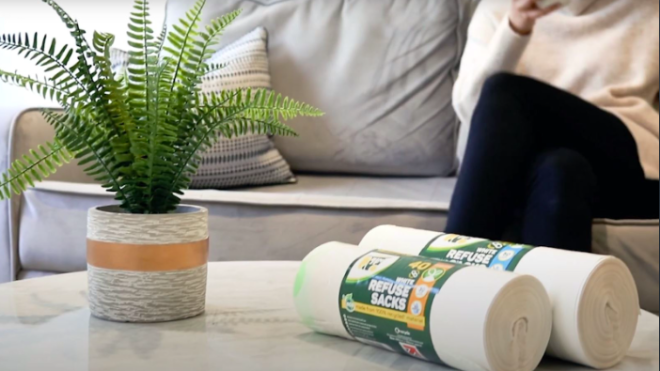In our journey towards sustainability, understanding the products we use daily plays a crucial role. At BinIt Bags, we’re proud to contribute to this journey with our range of recycled bin bags. But what exactly goes into these eco-friendly alternatives, and how green are they? Let’s look into the world of recycled bin bags and uncover their composition, the process behind their creation, and most importantly- their environmental impact.
The Composition of Recycled Bin Bags
Recycled bin bags, like ours, are primarily made from post-consumer recycled plastic. This means the plastic has already served its initial purpose, such as packaging materials, agricultural films, or even previous bin bags, and is being repurposed into something new. The process involves collecting, cleaning, and processing these materials to create recycled low-density polyethene (LDPE) or sometimes linear low-density polyethene (LLDPE), which is then used to manufacture new bags.
The Recycling Process: A Closer Look
Collection and Sorting: The journey begins with the collection of recyclable plastic materials, which are then sorted based on type and quality. This step is crucial for ensuring that only suitable materials make it into the recycling stream.
Cleaning: Once sorted, the plastics undergo a thorough cleaning process to remove any contaminants, residues, or labels. This ensures that the recycled material is pure and ready for repurposing.
Shredding and Melting: The clean plastics are shredded into small pieces and then melted down. This melted plastic is then formed into pellets, which serve as the raw material for producing new plastic products, including bin bags.
Manufacturing: The recycled pellets are blown into films and then cut and sealed into bags. During this stage, manufacturers may add certain additives to enhance the bag’s properties, such as strength, flexibility, or tear resistance. These additives are carefully selected to maintain the bag’s recyclability and environmental friendliness.
Are Additional Materials Added?
In some cases, recycled bin bags may include additional materials or additives to improve performance. For instance, to increase strength or tear resistance, manufacturers might add a small percentage of virgin materials or specific performance-enhancing additives. However, at BinIt Bags, we prioritise maintaining the highest possible content of recycled material while ensuring our bags meet the quality and performance standards our customers expect. Our bags are designed to be as green as possible, focusing on sustainability without compromising on durability.
How Green Are Recycled Bin Bags?
Recycled bin bags offer a significantly lower environmental footprint compared to their virgin plastic counterparts. Here’s why:
Reduced Waste in Landfills: By repurposing existing plastic materials, we’re diverting waste from landfills and reducing the demand for new plastic production.
Lower Carbon Emissions: The process of recycling plastics emits fewer greenhouse gases compared to producing new plastics from raw materials.
Conservation of Resources: Recycling plastics means less reliance on petroleum, a non-renewable resource used in virgin plastic production.
Promoting a Circular Economy: Using recycled bin bags supports a circular economy, where materials are reused and recycled for as long as possible, minimizing waste and resource consumption.
At BinIt, we’re committed to providing products that not only meet your waste management needs but also contribute positively to our planet’s health. Our recycled bin bags are a testament to this commitment, offering a practical, eco-friendly alternative for households and businesses alike. By choosing recycled, you’re taking a step towards a more sustainable future, one bag at a time.

